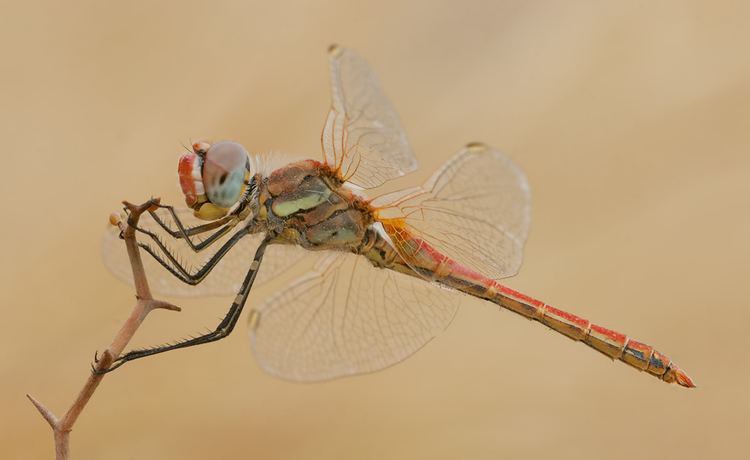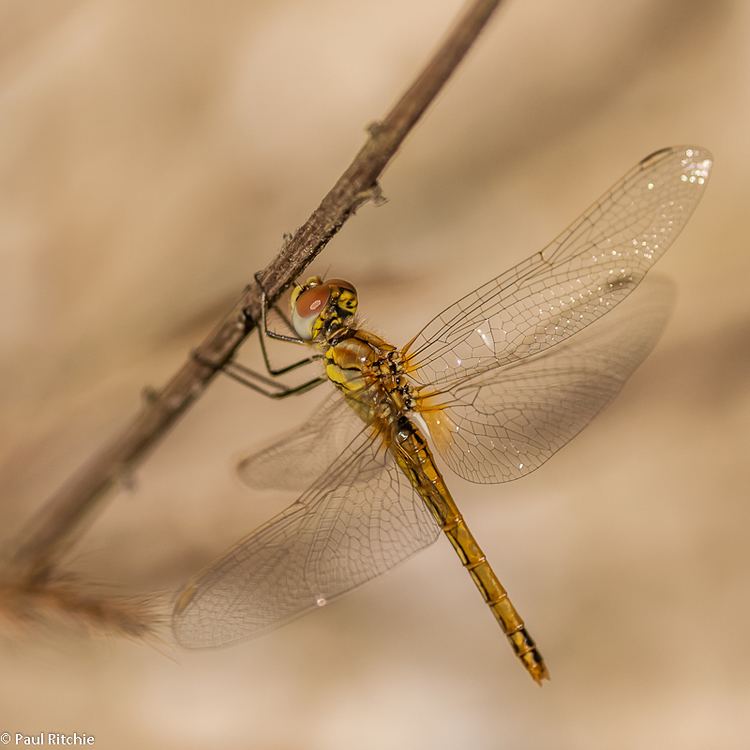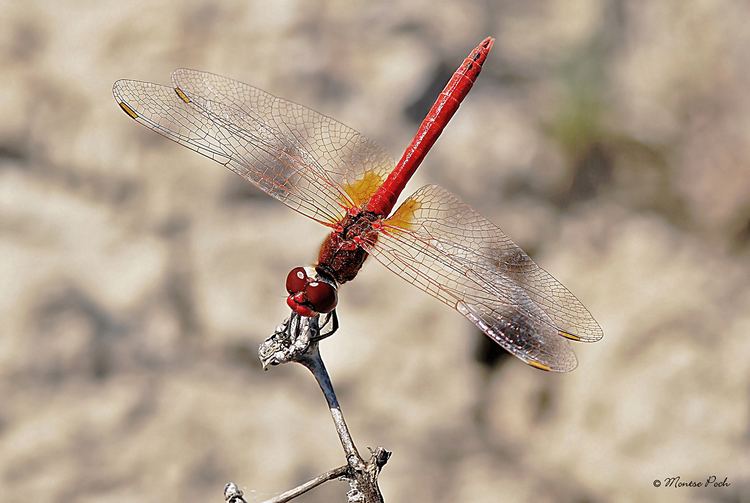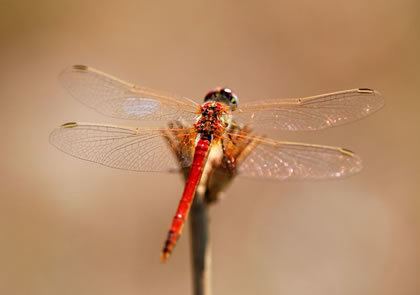Rank Species | Suborder Anisoptera Higher classification Sympetrum | |
 | ||
Similar Sympetrum, Odonate, Dragonfly, Scarlet dragonfly, Common darter | ||
Red veined darter zwervende heide libel female
The red-veined darter or nomad (Sympetrum fonscolombii) is a dragonfly of the genus Sympetrum. It is a widespread and common species found from the south to the north of Africa, southern Europe and eastwards to the Middle East, Central Asia, the Indian Subcontinent and the Indian Ocean Islands. It is a common species in southern Europe and from the 1990s onwards has increasingly been found in northwest Europe, including Britain and Ireland. Its name is sometimes spelt fonscolombei instead of fonscolombii but Askew (2004) gives the latter as the correct spelling. There is genetic and behavioural evidence that S. fonscolombii is not closely related to the other members of the Sympetrum genus and will at some time in the future be removed from this genus.
Contents
- Red veined darter zwervende heide libel female
- Red veined darter dragonfly part 2
- Identification
- Distribution and habitat
- Behaviour
- References

Red veined darter dragonfly part 2
Identification

Sympetrum fonscolombii is similar to other Sympetrum species but a good view with binoculars should give a positive identification, especially with a male. Males have a red abdomen, redder than many other Sympetrum species. The wings have red veins and the wing bases of the hind-wings are yellow. The pterostigma are pale with a border of black veins and the underside of the eye is blue/grey. The female is similar but the abdomen is yellow, not red, and the wings have yellow veins, not red veins as found in the males. The legs of both sexes are mostly black with some yellow. Immature males are like females but often with more red.

Male S. fonscolombii can be mistaken for Crocothemis erythraea as both are very red dragonflies with yellow bases to the wings, red veins and pale pterostigma. However C. erythraea has no black on the legs, a broader body and no black on the head. Also C. erythraea females do not oviposit in tandem. The jizz of these two species is different and with some experience are easy to tell apart.
Distribution and habitat

Occurs in much of central and southern Europe including most Mediterranean islands, in Africa, the Middle East and south-western Asia including India, Sri Lanka, and Mongolia. In Europe it is resident in the south of its range but in some years it migrates northward and has been found as far north as Belgium, Sweden, Finland, Poland and northern England. It is the only Libellulidae to be found in the Azores and it is also found on the Canary Islands and Madeira.

It is found in, and reproduces in, a wide range of habitats including permanent and ephemeral shallow and sunny standing waters, lakes, ponds, permanent and seasonal rivers. It is able to recolonize dry areas after a rainfall.
Behaviour
Sympetrum fonscolombii can be seen on the wing throughout the year around the Mediterranean and in the south of its range, however, its main flight period is May to October and it is scarce during the winter months. It is a territorial species with the males often sitting on an exposed perch. After copulation the pair stay in tandem for egg laying and pairs can be seen over open water with the female dipping her abdomen into the water depositing eggs. Pairs are known to fly over the sea in tandem dipping into the salt water where the eggs soon perish. The eggs and larvae develop rapidly and S. fonscolombii unlike most other European dragonflies has more than one generation a year.
